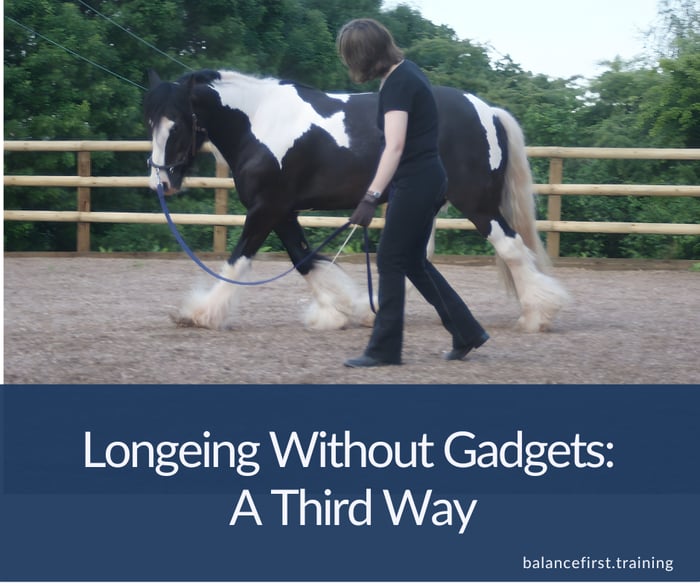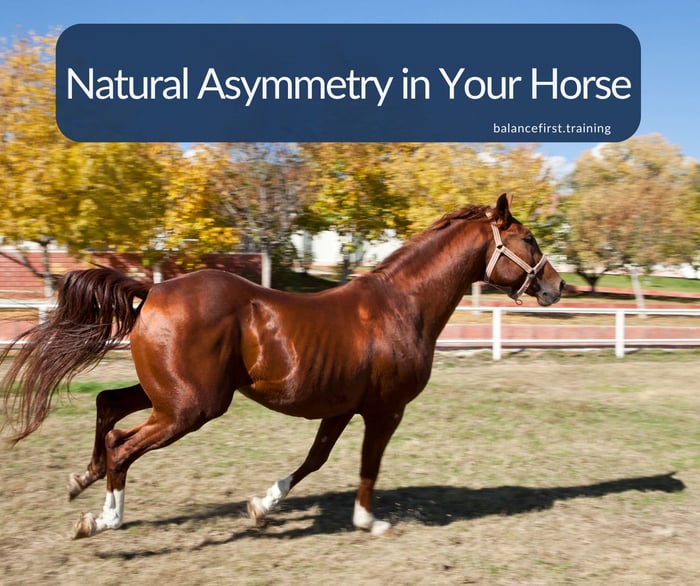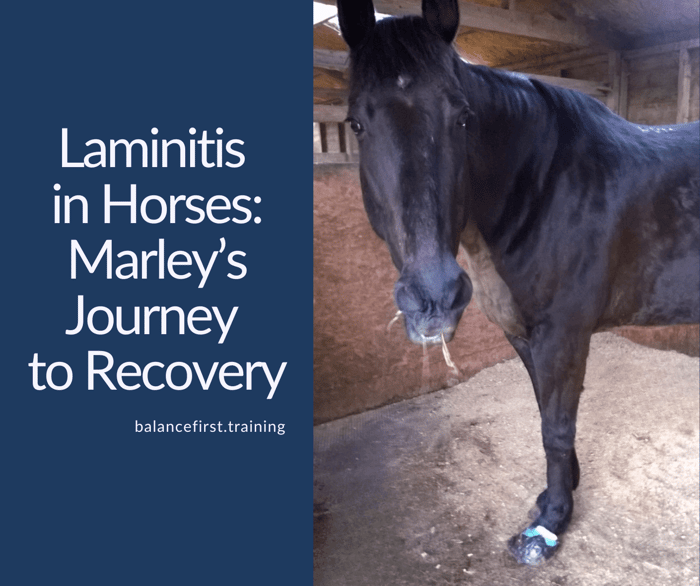Table of Contents
Longeing Horses
He looked like a trussed-up turkey!
That’s the only way I can describe it. Ropes wrapped around his body, head pulled down, eyes wide and bulging. And I hadn’t even asked him to move yet!
I’d bought this very expensive training aid (you can expect to pay over £100 now) on the advice of a body worker, which consisted of a rope with a series of pulleys and clips. My horse had muscle wastage along his back, and I had been told this would help him stretch and rebuild his topline.
But the moment I clipped it on, he looked at me, and I saw this deep sadness in his eyes.
I took it off immediately.
At the time, I didn’t have another solution. I didn’t know what else to do. But I knew that this wasn’t the way.
Years later, having discovered a better approach to longeing horses, I still remember that look and the feeling that made me realise it was just wrong. That moment has stayed with me.
I know many people use these tools with good intentions. But they often miss the quiet signals - the flattened ears, the tension in the jaw, the eyes that say, “please don’t”.
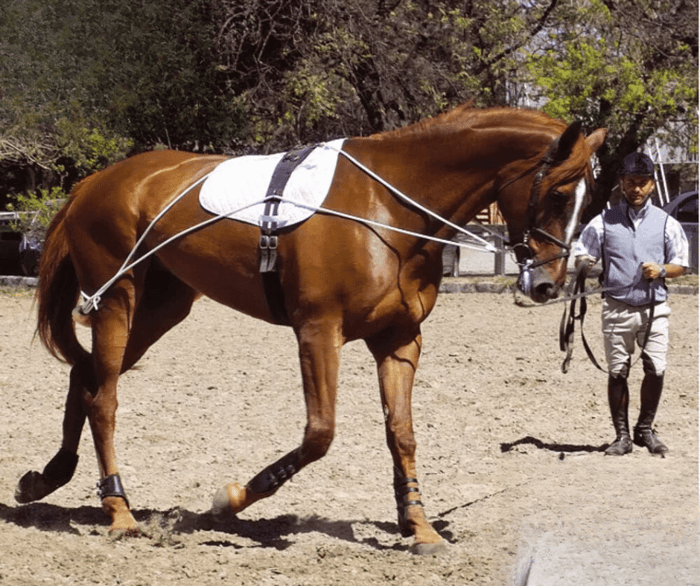
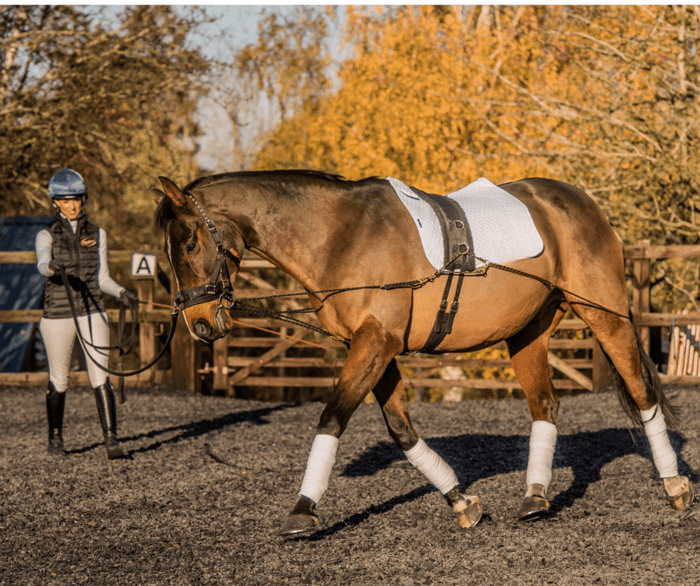
Common Misconceptions
One of the biggest myths in longeing horses is that they need sidereins or gadgets to learn balance. But in reality, these tools create tension, resistance, and confusion. They may produce a “round” outline, but they rarely produce true engagement.
Side reins cannot teach true contact because they do not yield. When the horse searches towards the hand, the rider needs to yield the hand and allow him to take the rein forward and down, so that he can lengthen the neck and topline muscles. Without that giving hand, the inevitable consequence is that the centre of mass falls onto the forehand and the nose behind the vertical, causing the horse to evade the contact or lean on it, as in the picture.
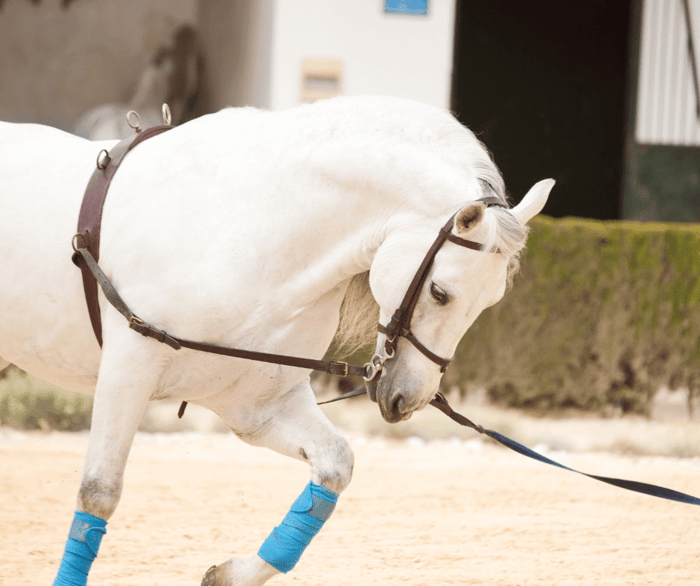
So How Can We Do It Better?
In many training circles, longeing is presented as a binary choice.
You either strap the horse into side reins, tie-downs, or gadgets that force him into a frame, creating the illusion of roundness while creating resistance and tension. Or you send him out on a long line with no guidance at all, watching him rush around the circle out of balance with a hollow back, engaged underneck, and pressure on his poll.
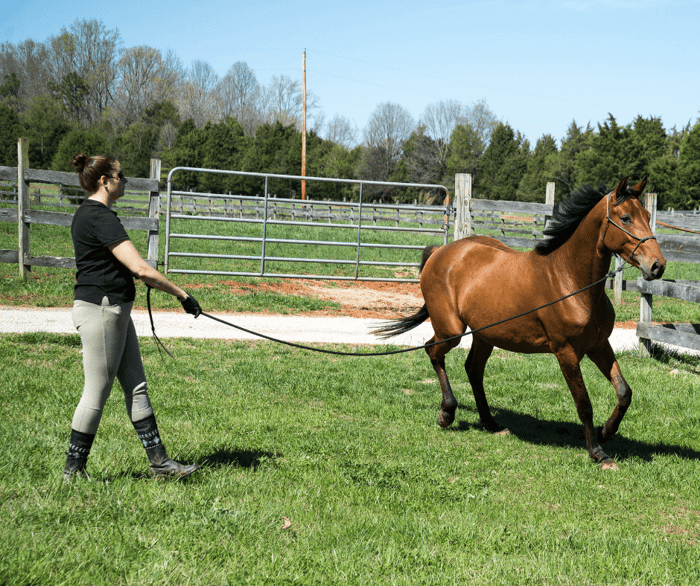
An unbalanced horse on a longe is the opposite extreme but similarly unhealthy. The horse is asked to move on a circle and without training, so he is not able to bend laterally to the right, his topline is hollow, and he falls to the inside. This will only exacerbate his natural asymmetry and make him feel unsafe.
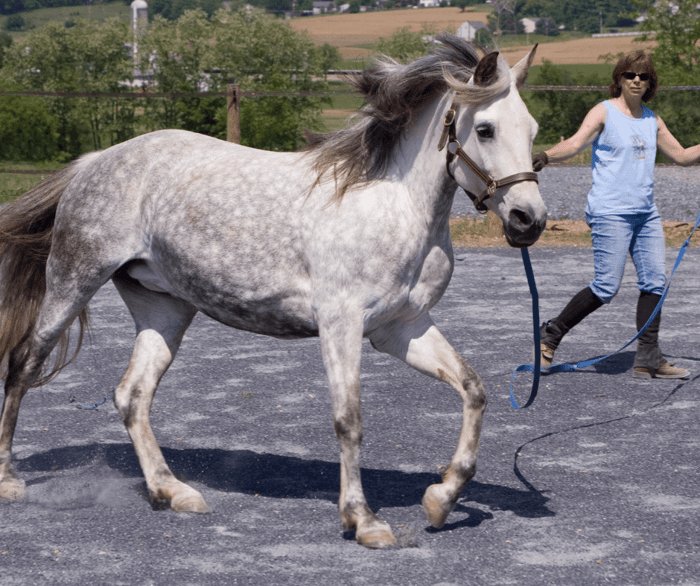
Neither approach supports the horse’s long-term health. Neither teaches him how to carry himself or addresses his natural asymmetries. And neither reflects the kind of relationship most of us want with our horses.
Pressure creates resistance, and this is true of any gadget. They give a false appearance of yielding and softness, because in reality, the horse is using the wrong muscles to keep himself in the contorted shape and avoid the pressure, usually the exact opposite muscles to those we want him to engage!
On the other hand, longeing horses without any guidance or support at all can leave them flailing, making the natural asymmetry worse, reinforcing poor movement patterns, and increasing the risk of injury.
But there is a third way. And it’s not only possible, it’s surprisingly simple to learn (I managed it after all ☺).
And once you see a horse move in true self-carriage, with correct balance, suppleness, and shape, soft and searching towards the hand, you’ll never go back.
What is the Third Way?
The third way to longe is about teaching the horse to move in a healthy posture and to keep his own self-carriage.
This approach uses clear communication and an understanding of equine biomechanics to help the horse organize his own body. Instead of holding him together with equipment, you’re guiding him towards a way of moving that feels good, makes sense, and supports his physical and emotional well-being.
- First, we teach the horse a set of aids so that you can build up clear communication.
- Then, starting in a Groundwork position, close to the horse, we guide him into a proper shape so that he learns a new way of carrying himself.
- When the Groundwork is going well, we can gradually send him out onto a bigger circle, guiding him to maintain balance, suppleness, and shape at a greater distance.
We start in the walk, because the horse's muscles need to adapt, and he needs to find a new way of moving. Then we gradually add the trot and canter, but only when the horse is ready.

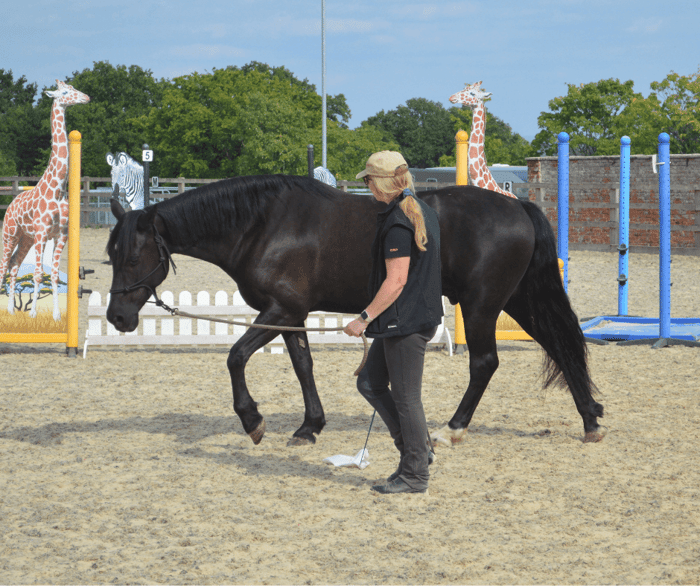
Why It's Better For the Horse
Training a horse to longe 'the third way' in self-carriage has so many benefits that tying a horse down simply cannot:
Prepares the horse for riding by teaching a clear set of aids that will transfer directly to riding, and building strength and coordination so that the horse is physically and mentally prepared to carry the weight of the rider.
Improves balance and straightness - the horse learns to turn on the circle instead of leaning in like a motorbike. This makes them feel safer because they are no longer literally feeling like they will fall.
Addresses natural asymmetry - the horse's body changes - tight muscles start to relax, and long, weak muscles get stronger, so that the horse can move easily on circles both to the left and right, and the weight is more evenly distributed over all four feet.
Strengthens the topline - the horse learns to relax and lengthen the muscles of the topline.
Strengthens the abdominal muscles - as the underneck and topline muscles release, the abdominals and thoracic sling muscles can engage through isometric contraction.
Supports joint health and longevity by shifting the weight from the preferred front leg and encouraging even loading over all 4 legs.
Improves coordination and proprioception, especially in young or rehabbing horses that tend to overtrack.
Builds emotional regulation - emotional balance comes with physical balance. It feels uncomfortable and often painful for a horse to move on the longe with the majority of the body weight in the shoulders. When the shoulders are free, the horse feels safer and more comfortable.
Develops a solid basic foundation.
You can train your horse in all lateral exercises on the longe, up to high school movementsWhen a horse learns to carry himself well, he feels better. He moves better. He becomes more confident, more expressive, more connected.
And you, as the trainer, become more skilled and observant, and develop a far greater understanding of the way your horse moves biomechanically.
Is It Difficult to Learn?
Not at all, but it can take some time. It takes observation, patience, and a willingness to let go of quick fixes. And if you are not used to working with your horse from the ground, there may be other challenges to address first. But the main principles are :
Teach the aids before you use them: Aids are usually taught at a standstill so that the horse can understand them fully and can easily respond in movement.
Start in Groundwork: It's a gradual process. Guide the horse to find balance, suppleness, and shape in a Groundwork position first.
Gradually send him out onto a bigger circle: teaching him to keep the posture (balance, suppleness, shape, tempo, rhythm, search) himself
Learn about body language: Where you stand, how you move, your energy, the angle of your shoulders and hips, your speed, your rhythm, and the inner picture and inner feeling you project, all matter. The horse responds to it all if you start using it.
The only equipment you need is a cavesson, longe line, and dressage whip or stick. You do need patience, a willingness to learn, and a commitment to the horse’s well-being.
Final Thoughts
The third way to longe isn’t flashy. It doesn’t promise instant results or dramatic 'outlines', and it won't put your horse 'on the bit' (although that could be argued).
But it does offer something far more valuable: a relaxed, supple horse that moves in a balanced and biomechanically sound self-carriage.
If you’ve ever felt uneasy about sidereins… If you’ve watched your horse rush hollow around the circle and wondered if there’s a better way… If you believe that training should improve the horse, not just put him in a shape…
Then this approach might be exactly what you’ve been looking for.
Training is about teaching the horse something that will improve him in a way that he can understand. It's not about squeezing the horse into an outline.
Longeing, done well, can be truly beautiful, and a lot of fun!
FAQs
Can I longe my horse without using gadgets or training aids?
Yes. In fact, longeing without gadgets encourages your horse to find their own balance and build postural strength naturally. It requires patience, observation, and clear communication.
How do I know if my horse is in self-carriage on the longe?
Look for signs like a long topline, relaxed underneck muscles, swinging tail, and a downward search of the head and neck. The nose should be slightly in front of the vertical, the poll the highest point, and the abdominal muscles engaged. The horse should move with a soft lateral bending, suppleness, rhythm, and easy flow, all 4 legs swinging forward in the direction of movement. The horse should be relaxed, focused, and content.
Is this method suitable for horses recovering from injury or muscle wastage?
Absolutely, yes! Building up the longeing gradually, so that the horse is never overfaced or forced, can support rehabilitation by encouraging correct posture and muscle engagement. Always consult your vet or physio before starting if in doubt.
What’s the difference between obedience and motivation in training?
Obedience is compliance; motivation is willingness. A motivated horse participates with curiosity and softness. This approach prioritizes the horse’s emotional and physical well-being.
Can young or green horses benefit from this approach?
Absolutely. Teaching self-carriage early helps young horses develop body awareness, confidence, and trust. It lays the foundation for riding.
Do I need special equipment for this method?
No. A simple cavesson and a longe line are enough.

